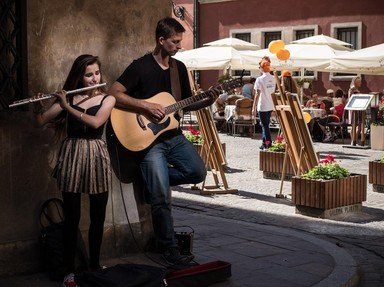Quiz Answer Key and Fun Facts
1. In 1856 a double-reed instrument was patented by Pierre-Louis Gautrot. This instrument was named for a French bandleader. It became popular in 19th century France, replacing the less powerful oboes and bassoons in outdoor band music. Name this instrument.
2. This aptly-named instrument is a bass member of the cornet family. It was first used in accompanying choral music in the 16th century. Two hundred years later it was introduced to the orchestra, adding strength and depth to the bass line of the brass. Which of the following instruments is it?
3. Developed by an instrument maker in the early 20th century, this double-reed member of the oboe family is very large, four feet to be exact. It sounds an octave lower than the oboe. What is is called?
4. Tchaikovsky used this percussion instrument in one of his most famous works. It looks similar to a piano but uses metal tubes instead of hammers. Which instrument is it?
5. Dating back to the Middle Ages, this woodwind instrument flourished during the Renaissance. As popular as the transverse flute during the Baroque period, what is this instrument called?
6. Rarely played today, this bowed string instrument was more commonly used during the Baroque era. A variation of the viola and approximately the same size as a violin, can you name this instrument?
7. In 1853, while composing 'Das Reingold,' the first opera of his four-part "Ring Cycle," Richard Wagner wanted to create an instrument that would have a hybrid sound for his 'Valhalla' theme. Which type of brass instrument bears his name?
8. This ancient Egyptian instrument was played by priests and priestesses. It's a percussion instrument that resembles a rattle. Sometimes considered to be an ancestor to the triangle, which instrument is it?
9. Having quickly established itself as a jazz instrument from the beginning, which percussion instrument uses four mallets instead of two and metal bars instead of wooden bars?
10. With a body similar to a lute, a fretted fingerboard like the guitar, and strings tuned like a violin, this instrument in the family of strings is very much a hybrid. Name it.
Source: Author
nmerr
This quiz was reviewed by FunTrivia editor
agony before going online.
Any errors found in FunTrivia content are routinely corrected through our feedback system.

